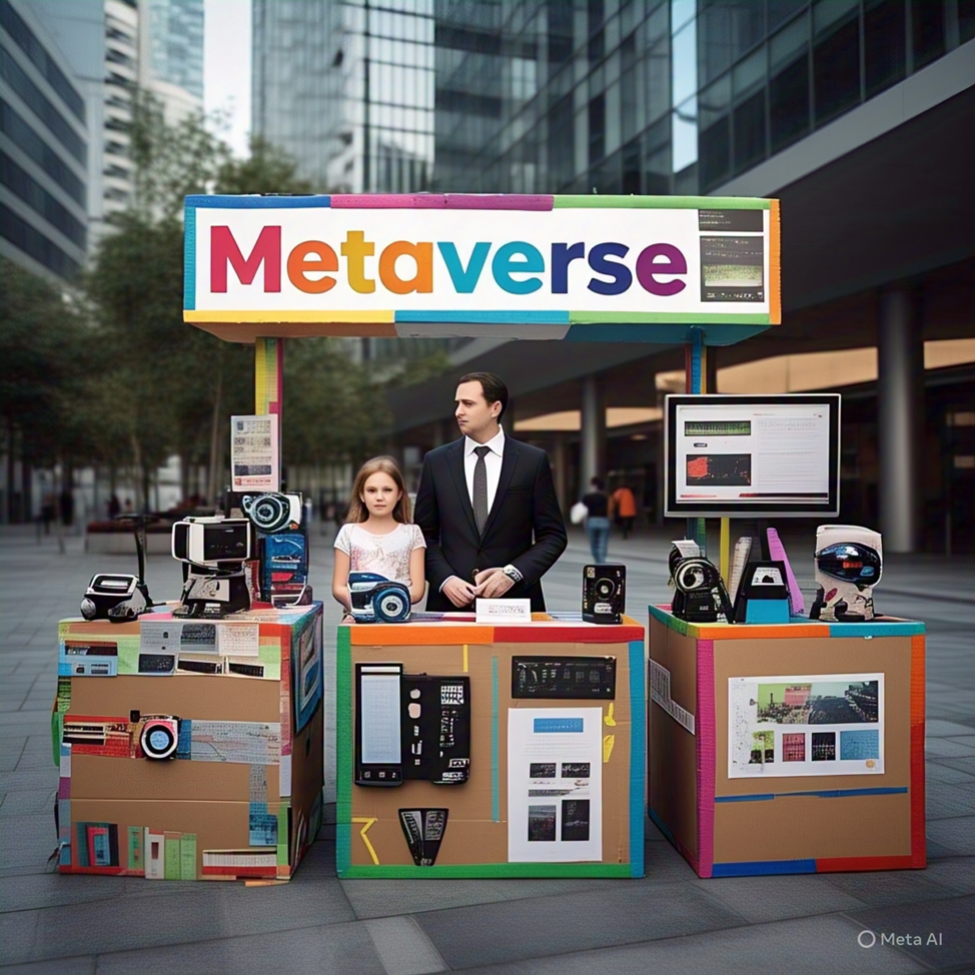Coined by Neal Stephenson in 1992, the “metaverse” was popularized by Meta in 2021. The intense hype has cooled due to unclear value, tech limitations, and lack of killer apps. While broad consumer adoption faltered, the concept isn’t dead. Development continues, finding traction in gaming, enterprise, and niche social VR. Like the Internet post-dot-com bust, metaverse technologies are evolving, though a clear definition and grand vision remain elusive, with focus shifting to more practical applications.

When does a buzzword become a thing?
Answer—never
The term “metaverse” was introduced by author Neal Stephenson in his 1992 science-fiction novel Snow Crash. Meta Platforms (formerly Facebook) is most associated with bringing the term into mainstream tech and business discussions in 2021.
Other companies like Microsoft, Nvidia, Epic Games, and Roblox have also actively used and promoted the concept since 2021.
In December 2020, Nvidia launched Omniverse in an open beta. Although originally a platform for real-time 3D design collaboration and simulation, it is often described as a foundational technology for the industrial and engineering metaverse.
So where, then, is this metaverse?
The initial, intense hype cycle around the metaverse has significantly cooled down, but the underlying concepts and technologies are still being developed and are finding applications.
Here’s a breakdown:
The hype has died down.
In 2021–2022, there was a massive surge in interest, investment, and media coverage, particularly after Facebook rebranded itself to Meta. Many companies rushed to announce their metaverse strategies. This hype has largely subsided. The mainstream conversation has shifted significantly towards generative AI (like ChatGPT).
Generally the ambitious, broad consumer metaverse projects haven’t seen the mass adoption that was anticipated. Companies, including Meta, have scaled back some of their more grandiose metaverse ambitions and investments, or at least tempered public expectations due to high costs and slower-than-expected returns, as well as lack of a clear, defining, definition.
Why the hype cooled.
• Unclear value proposition for mass market: For many average consumers, the why of the metaverse wasn’t compelling enough beyond niche gaming or social VR.
• Technological limitations: VR/AR hardware, while improving, is still often expensive, clunky, or not comfortable for extended use for many.
• Lack of killer apps: Beyond existing popular games (which some argue are already proto-metaverses like Fortnite and Roblox), broadly appealing must-have metaverse experiences didn’t materialize quickly.
• Interoperability challenges: The vision of a single, interconnected metaverse is far from reality; instead, there are many siloed platforms.
• Economic headwinds: Broader economic shifts led many tech companies to refocus on core businesses and profitability, cutting more experimental projects.
Some die-hard enthusiasts say, It’s not over, it’s evolving.
• Continued development: Companies like Meta, Apple (with Vision Pro), Microsoft, Nvidia, and many others are still investing in AR/VR hardware, software platforms, and enabling technologies (like 3D engines, avatars, spatial computing).
• Niche and enterprise applications: The metaverse concept is finding more immediate traction in specific areas like:

• Building blocks: The underlying technologies—real-time 3D rendering, spatial computing, digital identity, virtual economies—are still advancing.
• Long-term vision: The idea of more immersive, interconnected digital experiences is a long-term technological trend. The initial hype may have been premature for a mass-market, all-encompassing metaverse as depicted in science fiction.
The bottom line
The metaverse as the dominant tech narrative and the subject of frothy investment is past its peak hype. The most optimistic say it’s in a period of realignment and more focused development. The grand, unified vision might be decades away (if it ever arrives in that specific form), but components and specific applications of metaverse-like technologies are continuing to evolve and find their footing, particularly in gaming, enterprise, and specialized social platforms.
Think of it like the dot-com bubble—the initial bubble burst, but the Internet itself didn’t go away; it evolved and became foundational. The metaverse might follow a similar, albeit slower, trajectory as soon as someone can tell us what the hell it is.

If the metaverse has become the neververse, will Meta change its name again to Neverland?
LIKE WHAT YOU’RE READING? INTRODUCE US TO YOUR FRIENDS AND COLLEAGUES.